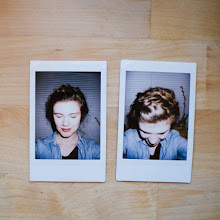We are moving into a new home this week and leaving behind our yellow house, a space that (minus the cockroaches) has been comfort and safety to me these past two years. I slipped on my wedding dress for the very first time in the bedroom, and a few months later put it on with my mother and sister by my side in that same room. It is the home Austin and I first came home to after our honeymoon, and the place where we have grown in love and understanding for one another. We have argued in this house, planted rosemary and lavender and mint in the front yard, built a raised bed with our own hands, strung lights in our backyard, hosted any number of bonfires and parties. We have filled this space with friends, over and over again, on air mattresses and at the dinner table, the leaves extended to fit as many people as possible.
I rode my bike by the yellow house a random hot spring afternoon in 2015, and thought, I want to live there. I memorized the address and looked it up online when I got home, and found out that it was a rental property, and due to be up for lease come the month that I needed to move. But, the realty company wasn't sure the current tenants would be moving. I spent that next month praying and riding my bike by it almost every day. I called the realty company every week to see if there were any updates, and finally heard word that it would actually be up for rent. It was a little more expensive than we anticipated, but a friend told us to go for it, that the first house that you live in as a married couple carries deep and meaningful memories, and that it would be worth it. So we did.
It wasn't until later that I noticed that the address 1101 was also our wedding date, November 1st—a silly coincidence, but one that makes me happy, and makes it seem fitting that it has been our first married house.









